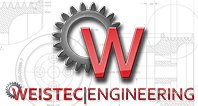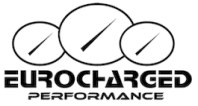Results 1 to 7 of 7
Threaded View
-
06-26-2015, 10:52 AM #1
 POP TAMALE IM SWEATING!
POP TAMALE IM SWEATING!











- Join Date
- Aug 2012
- Location
- FLORIDA BITCHES
- Posts
- 247
- Rep Points
- 823.0
- Mentioned
- 6 Post(s)
- Rep Power
- 9
Honeywell Dual boos turbo Tech on N54?
Hello Everyone,
Sorry if Im posting this in the wrong place.
I Have been reading up on newer turbo tech and came across honey wells dual boost turbos.
http://turbo.honeywell.com/our-techn...turbochargers/
Im curious if anyone has heard of these being used on similar platforms and what known differences in power and spool has been.
According to there article, smaller dual turbines, more efficiency, more power, 40% increase in transient response, Similar tech used in aerospace turbine technology.
http://turbo.honeywell.com/whats-new...o/?popup=video
Gasoline DualBoost Turbochargers
Gasoline DualBoost turbo technology ushers in a new concept in gasoline turbocharging that significantly improves ‘time-to-torque’ while delivering impressive steady-state performance. For the first time in automotive history, gasoline DualBoost employs an axial turbine more commonly found in aerospace applications, and couples it with a dual-sided compressor first introduced in diesel applications by Honeywell.
Engine Range
Honeywell gasoline DualBoost turbo can be used on two types of engines: those with a focus on fuel economy through engine downsizing and down speeding and those with a focus on performance enhancement. It is mostly suited for engines with a displacement of 1.4L and above.
Key Features
While turbos in production today generally feature radial turbines, in which the air flows in vertically and exits horizontally, the latest gasoline turbo technology from Honeywell uses the industry’s first axial turbine with air flowing in horizontally and exiting in the same direction. While axial turbines are common in Aerospace, adapting them for automotive applications has required some serious out-of-the-box thinking on the part of Honeywell engineers.
 Three features have made Honeywell’s axial turbines unique: zero-reaction aerodynamics, no nozzles and tall-blade design. The three characteristics, working in unison, enabled the axial turbines to attain higher specific speed, allowing for smaller size for the same flow, thereby lowering inertia by up to 40 percent. In addition, the axial turbines are designed for good efficiency under pulsating flows and improve catalyst light-off.
Three features have made Honeywell’s axial turbines unique: zero-reaction aerodynamics, no nozzles and tall-blade design. The three characteristics, working in unison, enabled the axial turbines to attain higher specific speed, allowing for smaller size for the same flow, thereby lowering inertia by up to 40 percent. In addition, the axial turbines are designed for good efficiency under pulsating flows and improve catalyst light-off.
The adoption of axial turbine design, due to its smaller size, has created two technical challenges: speed match with compressor and thrust load balancing. On both accounts, Honeywell’s dual-compressor technology is a perfect match.
First adopted in Honeywell’s award-winning VNT™ DualBoost turbocharger for diesel engines, the dual-sided compressor provides a significantly higher operating speed for the same air flow. As a result, it’s an ideal speed match for the axial turbine wheel, and its smaller size reduces inertia by 20 percent, contributing to increased throttle responsiveness. The dual-sided design also allows for “zero thrust” from the compressor wheel, so there’s no need for the turbine wheel to balance “pulling” from the compressor side of the turbo.
Key Benefits
By adopting a system approach, Honeywell engineers succeeded in combining innovations in both turbine and compressor stage, and the result is a smaller turbo that matches the aerodynamics of a larger one while delivering 25 percent improvement in time to torque. Enabling faster acceleration and better fuel efficiency through extreme engine downsizing, Honeywell gasoline DualBoost offers a package irresistible to carmakers and drivers alike.Last edited by crazylegs; 06-26-2015 at 11:01 AM.
2008 E92 335i- HP: 423 TRQ: 453 - Sold
Vishnu- Pocede
Active Autowerke - Intercooler
Active Autowerke - Charge pipe/BOV
Active Autowerke - 3" Downpipes
Active Autowerke - Signature Exhaust
BMS -DCI
2014 F30 335i M Sport
BMS- JB4 (EWG/E85/OBDII Canbus)
BMS- Intake







 Quote
Quote









Welcome to a...
Stephane is now here!